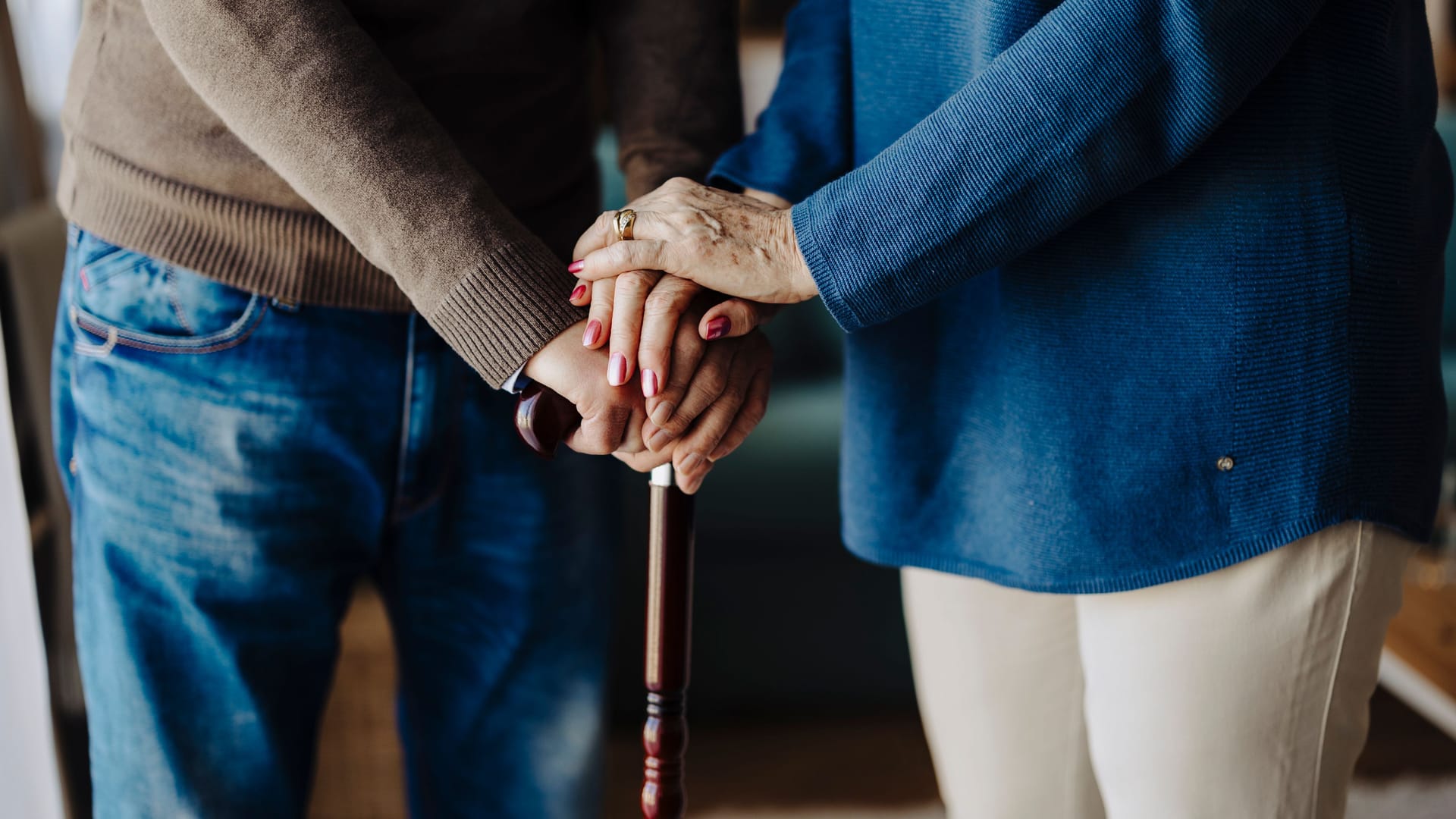Frequent nerve disease
Parkinson’s: Two measures significantly reduce the risk
Updated on April 10th, 2025 – 4:48 p.m.Reading time: 5 min.


The number of Parkinson’s cases is increasing worldwide-and not only because we get older. To prevent the disease, you can do two things.
Parkinson’s is one of the fastest increasing neurological diseases worldwide. According to current figures, almost 300,000 people aged 40 and over are affected in Germany alone. Typical symptoms such as uncontrollable tremors, slow movements and balance disorders usually only occur in old age. But the disease begins long before.
A current study in the journal “BMJ” predicts that the number of those affected worldwide from 11.9 million in 2021 to 2050 could more than double. 574,000 sick people are predicted for Germany – that would be the fourth highest number of patients after China, India and the USA.
In the case of Parkinson, the nerve cells that produce dopamine die in the brain – a messenger substance important for movement control. The protein alpha-synuclein is central: folded forms of this protein clump and store themselves in the brain. “However, the exact causes are not yet known,” says neurologist Brit Mollenhauer, chief physician at the Paracelsus-Elena Clinic in Kassel. It is probably an interaction of environmental, metabolic and genetic factors.
In addition to the typical tremors, muscle tension, gait and equilibrium disorders occur. Those affected can also have a rigid facial expressions and a quiet or monotonous language. In addition, sleep and smell disorders, depression and cognitive impairments can show up to dementia.
- Read too: So far incurable: Parkinson’s is slowly developing
- or: These symptoms can be the first signs of Parkinson’s
Studies suggest that a whole series of environmental toxins increase the risk of Parkinson’s, including primary pesticides. “Many pesticides have in common that they trigger inflammation processes in the brain and oxidative stress,” explains Eva Schäffer from the Clinic for Neurology of the Schleswig-Holstein University Hospital, Campus Kiel.
In addition, pesticides also change metabolic processes and start further mechanisms in the brain that contribute to the illness. Accordingly, the medical advisory board decided on occupational diseases (äsVB) in 2024 a scientific recommendation for an occupational disease “Parkinson’s syndrome through pesticides”-a step that was carried out in other countries years ago.
According to the Schäffer, there are other environmental factors in which there are increasing indications of an increased risk of Parkinson’s risk, including the frequently used solvents trichlorethylene and air pollution, especially in the form of fine dust.
After all, the individual lifestyle also plays a central role. For example, physical inactivity, but also a diet that contains many heavily processed foods were among the risk factors.
About ten percent of Parkinson’s diseases are genetically due to. For the far larger part of the cases, however, there are far -reaching prevention options from the risk factors: “Those who run moderate endurance sports can reduce the risk of Parkinson’s by up to 60 percent,” emphasizes Schäffer. It does not have to be a specific sport: “Everything that increases heart and respiratory frequency helps.”
Mollenhauer also emphasizes: “Movement has a very strong anti -inflammatory effect and is actually the best drug we carry in ourselves. Especially for people in middle age, an hour of sport a day would be ideal, combined with a corresponding diet.”
A lot of fruit, vegetables and legumes are advantageous, says Schäffer: “Ballast and plant substances have a positive effect on the intestinal microbioma-and for some time we have known that there is a connection between the intestine and brain, the intestinal brain axis.” It fits that many Parkinson’s patients suffer from severe constipation for decades before their diagnosis.
Movement and nutrition are also important factors after the diagnosis – both in the early stages before the clinical outbreak and in the event of advanced disease.
There is a lot to achieve in both areas with the lifestyle factors mentioned, says neurologist Schäffer. “For example, it can be possible to move the outbreak of symptoms backwards, but even afterwards, sport can slow down the deterioration in mobility and also relieve non-motor symptoms such as constipation, depression or cognitive problems.”
However, the combination with good drug treatment is important: medicines are usually used here to replace the messenger dopamine. “Of course we can’t give too many medication, but we need dopamine to be able to move,” explains Schäffer. If you save too much on the medication, the patients are stiff and poorly movable. “Then it becomes a fight to get into sport.”










